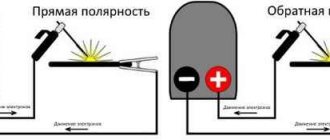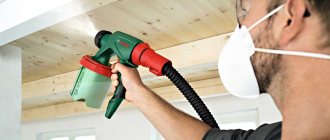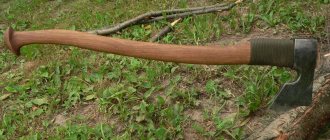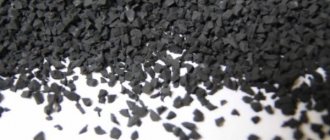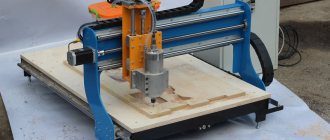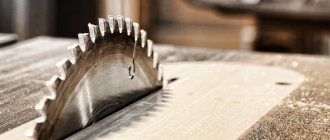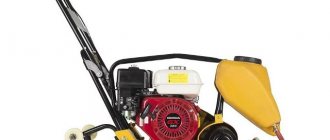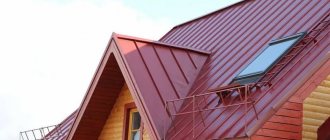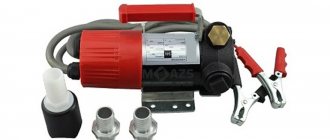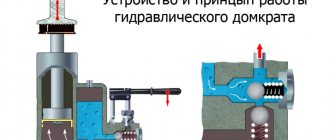Spray gun for whitewashing
Whitewashing a room is a fairly long process if you do not resort to automation. But factory-produced automation is a very expensive pleasure, and it is not always possible to guess with quality.
The spray gun can be purchased at a specialized store, but it is quite expensive, so it is better to try to make the spray gun yourself.
Therefore, craftsmen have long found a solution in which a spray gun for whitewashing with lime is made in artisanal conditions.
There are plenty of schemes for such a spray gun, and they are all based on the same principle - on one side there is a direct air supply, under the influence of which the lime is drawn out of the container and supplied to the sprayer. Each master professes his own version of execution, but there is one generally accepted one, the simplest and quite reliable.
Using an ordinary ballpoint pen, you can build a whitewash sprayer that can cope with any task. The only important factor (applies to all sprayers used to whitewash rooms) is the need to first filter the coloring liquid from large elements that can clog the nozzle.
In total, it doesn’t take much time to make a spray bottle, but the first time it may take longer than the expected hour. When the hand is full, an hour will become the upper threshold of time needed to complete the work. Craftsmen who do this kind of work quite often complete the installation from start to finish in 15 minutes.
Manufacturing process
Diagram of a spray gun made from a pen.
- Ball pen.
- Pliers.
- Emery stone.
- Carburetor spray.
- Cutter.
- PVC electrical tape.
- Matchbox.
At the very beginning, take a simple, cheapest ballpoint pen and completely disassemble it.
The first step is to work with the rod. Use pliers to separate the metal pen and the plastic shell with paint. The paint needs to be blown out, for which any compressor (even an aquarium compressor) or a vacuum cleaner with reverse draft is perfect (it is unlikely that there will be a nozzle of the right size, since they can only be made by hand).
After the tube is cleared of paint, it should be rinsed with running water until clear. Do not use too hot water to prevent the plastic from melting. If you have a spray for the carburetor, it will be a godsend. As a result, the rod will shine with cleanliness, and by its appearance it will be impossible to tell that not so long ago it was completely filled with paint from the inside.
Now you can start working with the plastic case.
Using an emery stone, the hole is slightly widened on the side where the metal feather used to be. You only need to expand it by 1-1.2 mm. If you have a knife sharpening machine, the work will take a matter of seconds. In this case, you need to be extremely careful, because... The plastic is very fragile.
You also need to cut the thread. For cutting, any knife or cutter sharpened enough not to break the plastic is suitable. If the thread is left, the effect of the air flow will be quite weak.
Now you can use PVC tape to attach the plastic case to the matchbox. When strengthening, it is important to observe a small nuance - the narrow nasal opening should protrude quite a bit beyond the end of the box. At the very beginning, it is better to simply attach and fix the case with a couple of turns of electrical tape, so that you can redo it later.
A spray gun made using a vacuum cleaner.
The plastic rod is attached in a similar way. Upon completion of fastening, their noses should look exactly end-to-end. In no case should this requirement be neglected, otherwise draft will not be created, and with it the whitewash will not rise.
After everything is aligned, the electrical tape has completely fixed both tubes along the entire edge of the matchbox; it must be burned. Melting occurs on the reverse side of the tubes so as not to damage them in any way.
Workflow and small additions
The soft rod is lowered into the container with paint to the very bottom (there should be a gap, but the paint should not allow air to enter the tube), after which a strong air pressure is supplied to the plastic rod and the direction is selected.
Peculiarities
When the question arises about finishing work regarding the ceiling in a room, there is a need for a convenient and effective tool that will help solve this problem.
When planning to whitewash a ceiling or walls, you can use a roller or brush, but treating the surface in this way will take a lot of time, and the process itself will be fraught with discomfort and various difficulties.
In order to optimize and facilitate such work, special devices for painting surfaces are available on the modern market. They are called spray guns, some call this product a spray gun, a spray gun, and so on. The spray gun is available in manual, pneumatic and electric types.
The main feature of working with painting guns is the level of safety that they provide to the master, because everyone knows that lime mortar is quite caustic, and therefore can cause burns upon contact with human skin. When using a brush, such cases arise very often, and using a spray gun eliminates the presence of such unpleasant situations during finishing work.
Using a mechanical spray gun for whitewashing does not require a stepladder, since the special fishing rods included in the device will make it possible to paint ceilings and corners between the ceiling and walls while being on the floor.
Hand tools will save time on painting as they are powerful enough to cover a large work area, working on a principle that allows you to paint substrates with minimal mess and splashes.
The standard type of mechanical device for whitewashing is a small-volume container into which a coloring composition, lime, chalk solution or any other liquid substance is pumped.
The main component of the tool is attached to the reservoir - a handle with a button that controls the progress of spraying the composition, the angle of application and intensity. In addition, the spray gun is equipped with a nozzle from which the solution exits onto the base.
Today on sale you can find a large number of modifications of mechanical tools used for whitewashing; they differ in their design characteristics and cost.
For industrial purposes, hand sprayers are rarely used; their main area of application is operation in private houses and apartments.
Another model of hand-held spray guns is considered to be a piston tool; it is notable for its size and a slightly different principle of performing the work.
In such a device, air injection is performed in the same way as a conventional pump when inflating. The cylinder contains several hoses, one of them is connected to a container containing a composition for treating bases.
The second hose has a sprayer at the end; it is an elongated metal tube with a button and a nozzle.
The advantages of manual sprayers include the following qualities of the tool:
- simple configuration - the spray gun is very easy to disassemble, which allows, if necessary, to replace any part that has become unusable;
- ease of use - any master can regulate the flow of the composition, even a person with minimal experience;
- hand sprayers are universal devices that are suitable not only for working with lime and chalk, but also any other type of dye for substrates - the tool is recommended for use with any finely dispersed coloring compositions;
- the products have a low cost; the pneumatic spray gun is considered the most expensive device;
- the applied composition lays down in an even layer;
- there is no need to use additional devices in order to process hard-to-reach parts of the base.
Types of spray guns for whitewashing
Manual spray gun for whitewashing
The simplest and most autonomous type of sprayers for working with water-based, water-lime and water-based adhesive compositions. It works on the principle of a pump, sucking the mixture from the reservoir and pushing it out under pressure through the nozzle. It has a long rod with a sprayer, which allows you to use a hand-held spray gun for whitewashing ceilings and high walls without a stepladder. The quality of the coating is quite good, but does not reach a professional level.
The mechanical spray gun has a simple and intuitive design that allows even a beginner to assemble the device without studying the instructions. The absence of complex elements ensures a long service life of the device. The minimum cost is around 4500-5000 rubles, which makes it not the cheapest option in comparison with budget models of electrical devices.
Electric spray gun
Semi-professional type of paint sprayers, powered by mains or battery (in rare cases). The device is based on an airless operating principle. An electric motor pumps the mixture from the tank and releases it from the nozzle under pressure. The spray torch, in most devices, covers a small area (much smaller than that of a hand-held spray gun), which reduces the speed of work. The quality of application is higher than that of a mechanical analogue, and almost equal to a pneumatic tool. The most common nozzle diameter, 0.8 mm, allows the use of an electric spray gun for lime and many paints and varnishes.
The average weight of the tool is 1.5 kg, which is noticeable when working with large areas. The reliability of electric spray guns depends on the quality of its components, and in most cases is seriously inferior to manual devices. The price tag for electric sprayers for household use starts from 1,500 rubles and ends in tens of thousands. Such a tool is considered the best option for amateur use.
Pneumatic spray gun
A professional-grade spray gun powered by compressed air supplied from a compressor. Working with such a tool requires special equipment, certain experience and knowledge. A layer of paint applied with a tuned device of this type forms an almost perfectly smooth surface, without smudges or the smallest stains. Atomization of the mixture occurs due to air pumped into the device from a compressor under a pressure of about 4-5 atmospheres (on average). The tool is quite flexible in configuration, due to replaceable nozzles, torch regulators, air and material supply. Can be easily used for whitewashing with lime and chalk.
Budget models of pneumatic sprayers can be purchased for less than 1000 rubles. At the same time, the compressor and hoses necessary for its operation will cost at least 6-7 thousand. Higher quality equipment used by professional painters costs many times more.
Criteria for choosing a tool for whitewashing
When choosing a spray gun, they are guided by the following criteria:
- Price. The most expensive are pneumatic models, the cheapest are electric. When making a paint sprayer with your own hands, the cost of materials will be minimal.
- Ease of use. The tool should be light, compact and easy to transport. The sprayer should be located on a long rod to facilitate the treatment of hard-to-reach places and surfaces located at high altitudes. This is especially important when whitewashing trees with a spray gun.
- Tank volume. For whitewashing large areas, it is advisable to choose a device with a large tank. The prepared solution should be enough to cover the entire surface area at one time. If you have to mix new portions of the solution several times during the work process, the coating may turn out to be uneven in color and thickness.
- Possibility of use in various conditions. Electric and pneumatic spray guns require a power source in the form of an electrical outlet. It may be difficult to operate these devices outdoors. Mechanical devices, on the contrary, can be used under any conditions.
- Uniformity of the jet exit from the nozzle. This factor is important to ensure uniform distribution of the solution over the treated surface. When using pneumatic devices, the pressure is maintained at a constant level using a compressor, and the jet comes out continuously. When working with manual paint sprayers, you must independently monitor the pressure and periodically increase it by pumping air in with a pump. Due to the gradual drop in pressure during operation, the solution stream is uneven. This affects the quality of the resulting coating.
- The quality of the resulting coating. The smoothest coating can be obtained when working with pneumatic devices. When using a hand spray gun for whitewashing, smudges and unevenness are possible.
- Device service life. It depends on the type of spray gun and the manufacturer. Mechanical devices are considered the most reliable, and electrical ones are considered the most short-lived.
- Possibility of repairing the spray gun. If individual structural elements break down, it should be possible to replace them with new ones.
Do-it-yourself lime whitewash sprayer
By instruments:
- Drill or screwdriver
- Pliers
Having prepared all the above elements, you can begin the simple assembly process. Since the device we manufacture will be used for a small amount of work, ordinary electrical tape, adhesive tape and/or glue can be used as fastening elements. For a more reliable connection of the nozzle with the hose, you can use a metal clamp.
The detailed process of assembling a hand-held spray gun is clearly demonstrated in the following video. The author of the instructions assembles a sprayer for garden plants using a regular spray bottle as a nozzle. Our whitewashing device also works on the same principle as this product.
Benefits of the tool
A hand-held spray gun is a fairly versatile device. They can not only cover relatively large surfaces with paint. Using this simple device, vegetable and berry bushes and fruit trees are sprayed, adhesive and cleaning solutions are applied, premises are disinfected, and flammable surfaces are impregnated with fire retardant compounds.
For whitewashing with lime, this is generally an indispensable tool. When painting by hand with a brush, it is necessary to carefully protect the remaining surfaces, since slaked lime is a rather aggressive liquid. The nozzle for the spray gun applies the composition evenly and accurately. With proper adjustment, there are virtually no streaks or stray painted surfaces.
This is done so that the whitewash does not smear over time and lasts longer.
The most suitable use for a hand pump is for painting the ceiling. This type of painting work is usually associated with various kinds of difficulties. To apply paint evenly, you need to quickly move around the room, and doing this with a stepladder is quite difficult. It is especially difficult to reach every corner if the ceiling is more than 3 meters high.
The pressure created by the pump produces a powerful spray of paint at the outlet of the sprayer, which evenly covers the horizontal surface of the ceiling from a distance of up to one and a half meters. How to use a hand spray gun correctly?
- Half the success lies in the correct preparation of the coloring solution;
The viscosity must exactly correspond to the instructions for the selected sprayer. It is better to stir the paint using a mixer (a drill with an attachment is quite suitable). Before use, the solution can be filtered through a sieve or cheesecloth. Despite the filter included in the suction hose, there should be no solid particles or uneven fractions in the solution.
Before starting work, the pump should be pumped to bring the valves into working condition (natural sealing method);
It is necessary to pump approximately 500 ml of solution into the pump. Then remove the suction hose filter from the container and make 10-20 idle working movements of the rod. In this case, the pump valves will undergo a self-regulation procedure. After this, the intake filter is again immersed in the solution, and with vigorous movements of the rod we bring the pressure in the system to the required value.
Then the spray pattern is adjusted;
To do this, you need to simulate the conditions under which you plan to paint. In the same room (subject to maintaining humidity and temperature) a test surface, for example made from old wallpaper, is placed. A training layer of paint is applied to it from a fixed distance. By adjusting the nozzle nozzle, working pressure and solution viscosity, the optimal option is selected.
To ensure continuity of paint application, it is preferable to work together;
In the video, the master shows how to whitewash walls and ceilings with a spray gun.
In this case, you will not have to interrupt the process and be distracted by periodically pumping up the working pressure.
Painting is done from the corners, then the sprayer is moved in a spiral so that each next layer overlaps the previous one;
The first layer is applied more densely, but without the formation of smudges. After final drying, the second, final layer is applied. It should be less “fat” and is intended rather to correct the flaws of the first layer.
The room temperature should be within 15-30 degrees above zero, humidity no more than 50%; The painter and his assistant must be protected from paint coming into contact with exposed areas of the body, and if the paint contains synthetic solvents, they must use a respirator.
Preparing a solution for a spray gun
Dilution of slaked lime
(fluff or dough) is made at the rate of 3 liters of water per 1 kg of material. To make the composition white, add a teaspoon of paint blue to 10 liters of diluted solution. To increase the strength of the applied composition, dilute 1 teaspoon of table salt for the same 10 liters. To improve the adhesion of the composition to the surface, you can add a couple of tablespoons of drying oil to it. The finished mixture should be passed through several layers of gauze or stockings to remove lumps and small debris.
The process of lime whitewashing with a spray gun
Whatever tool you have at your disposal: an electric, pneumatic or mechanical hand-held whitewashing spray gun, you should know the basic rules for its use in order to improve the quality of your work. Do not neglect safety measures when spraying lime and protect your respiratory organs, eyesight and skin.
When starting to make a spray gun with your own hands, let’s note the main advantages of using an airbrush over manual painting. These include:
- better and more uniform coloring;
- the appearance of foreign objects on the surface, for example, lint or bristles, is excluded;
- acceleration of the dyeing process.
Directions in which you can use a self-made sprayer:
- for painting furniture products, wooden structures;
- for painting cars and other metal surfaces;
- for whitewashing ceilings and walls with lime.
Hand spray gun
Manual devices are considered the best and most affordable. Beginning builders prefer to use them. The manual spray gun has the following advantages:
- Simplicity of design. This allows you to quickly replace a broken part if necessary, because it is easy to disassemble and assemble.
- Ease of control of the sprayer, i.e. supply of lime solution.
- Reliability.
A manual spray gun is cheaper than electric and pneumatic models. It is perfect for work at home, especially for small spaces. The main element is the pump; the device also consists of:
- sprayer;
- valve;
- hoses - 2 pcs.
They can only be applied with water-based paints. To paint with water-based paint efficiently, you need to remove the old layer from the surface. If you paint over old whitewash, then over time cracks will appear on the wall and the coating will crumble.
A manual mechanical sprayer does not require special care. It is necessary to systematically rinse the tank and hoses with water. One small drawback is that maintaining the required pressure in such a device is problematic. As a result, the speed of the jet is reduced.
Types of spray guns
Before you make a spray bottle with your own hands, you should familiarize yourself with its types and features. In principle, there are several varieties of them:
- manual paint sprayer; paint sprayer from scrap parts
- Any bottle that has a fairly wide neck can serve as a container for filling paint.
- Next, a part is cut out of high-density polystyrene foam in accordance with the dimensions of the neck. For ease of use and to ensure the required pressure when operating a homemade spray gun, the dimensions must be increased by a few millimeters.
- Let's start making holes in the foam parts. There should be two of them. The first is positioned strictly vertically, the other horizontally, in such a way that they intersect.
- Next, we take a regular helium pen, empty the rod of it from the contents and arrange the parts in this way: the rod from the pen is threaded into the vertical hole, and its body is threaded into the horizontal hole.
- At the final stage, we connect the parts and the mini-spray gun is ready for use.
To make a spray bottle with your own hands from materials that are found in almost every home, you can use the following algorithm:
Important! We draw attention to the fact that holes must be drilled, despite the flexibility of the foam. In the case of a simple puncture, the tightness may be compromised in the future and it will simply be impossible to use the sprayer for its intended purpose.
Kinds
Spray guns are special devices that allow you to apply stains, lime, primers or paint to all types of surfaces. In addition, the device can be used, among other things, to humidify walls using ordinary water.
1-Electric spray gun 2-Pneumatic spray gun
There are the following types of spray guns on the market:
- Hand models . They have tanks made of plastic or metal. They are filled with lime, after which one end of the hose is inserted inside. The other, in turn, is connected to the atomizer. To operate the spray guns, appropriate convenient levers are provided. This happens through the pressurization method. This simple technology determines the low cost of such products. As a result, they gained significant popularity. Most often, manual models are used in everyday life.
- Electric models . Such spray guns are distinguished by their power, efficiency and practicality of use. These devices are only slightly inferior in performance to pneumatic models. At the same time, electrical appliances have a much lower cost. Such devices are suitable for both domestic and professional use. The operating principle of electric models is not based on the use of air. The process of pumping and supplying the color mixture occurs through a motor.
- Pneumatic models. Despite the fact that such spray guns are much more expensive than manual ones, they are still in demand. This is directly related to their efficiency of use. The operating principle of these devices is based on pressure injection. This does not happen by moving a lever, but by a special compressor. This method allows you to uniformly and efficiently apply whitewash to very large surface areas.
Expert opinion
Kuznetsov Vasily Stepanovich
Thus, before purchasing one or another type of spray gun, you need to clearly understand what characteristics and functional features it should have.
Basic nuances of using a sprayer
In order to be able to use the sprayer yourself correctly, you need to listen to the basic recommendations of specialists:
- When spraying paint or mortar, do not linger in one place. This can lead to the formation of a thicker layer than necessary. It is better to maintain the same time periods to ensure a uniform layer of color.
- The rod from which the paint comes must be placed strictly perpendicular to the surface to be painted.
- Moving the spray gun in a circular motion will also allow the paint to be placed evenly on the surface.
- If the paint is applied in several layers, then each subsequent one must be applied after the previous one has completely dried.
- An important role is played by the preliminary preparation of the surface to be painted.
The process of making a sprayer with your own hands is quite labor-intensive, which should be approached with all responsibility. A homemade spray gun will allow you to significantly save money and get a high-quality painted surface, and, importantly, save on paint solutions. After all, when working with a spray gun, material consumption is significantly reduced.
Tips for creating a spray gun (2 videos)
How to choose a spray gun?
In any hardware store you can find a wide range of similar products. Spray guns differ primarily in the type of work. Mechanical devices will cost much less than electric or pneumatic ones. Therefore, they are in great demand, although they are considered not very convenient.
Before purchasing a device, you first need to determine for yourself in what area it will be used. If we are talking about home repairs in a small apartment, you can safely purchase a manual device. It will be both more profitable and more convenient.
Mechanical sprayers may also differ slightly. First of all, this concerns the volume of the paint tank. If it is too large, it will be awkward to hold, and if it is too small, you will have to constantly add paint. Therefore, you should opt for the middle option.
Paint containers can be made from several types of material. Most often, manufacturers offer plastic and metal tanks. Both types last a long time, but plastic is lighter and cheaper, which is why such spray guns are more popular. The paint container can be located below or above the lever. This does not play a big role, and this factor does not affect the quality and ease of use at all.
A much more important characteristic is the size of the nozzle. The best option is 1.5 cm
This will allow the spray gun to work with most types of paint. If you take a smaller size, then there will be no more options other than using a spray gun for water-based paint.
Normal spray guns with average performance produce about 8 bar of operating pressure. This will be enough to work on medium surfaces and apply paint in a fairly neat and thick layer. A pressure of more than 10 bar will produce a large torch that can quickly paint large volumes, but in this case the paint is applied in a very thin layer.
If you plan to use the spray gun to work with putty, it is worth purchasing an automatic version with a wide nozzle and high operating pressure. Most often, pneumatic devices are used for these purposes.
When buying a spray gun, you need to carefully examine it, hold it to your hand to make sure that it is really convenient to use, and be sure to pay attention to the package. It is advisable that the device does not weigh too much
Otherwise, your hands will immediately get tired while working. Many devices come with additional attachments. They can be used for different types of paint, making the device more versatile. However, too many unnecessary extras will be a waste of money. Such devices will cost more than regular ones, so there is no point in overpaying for unnecessary parts.
